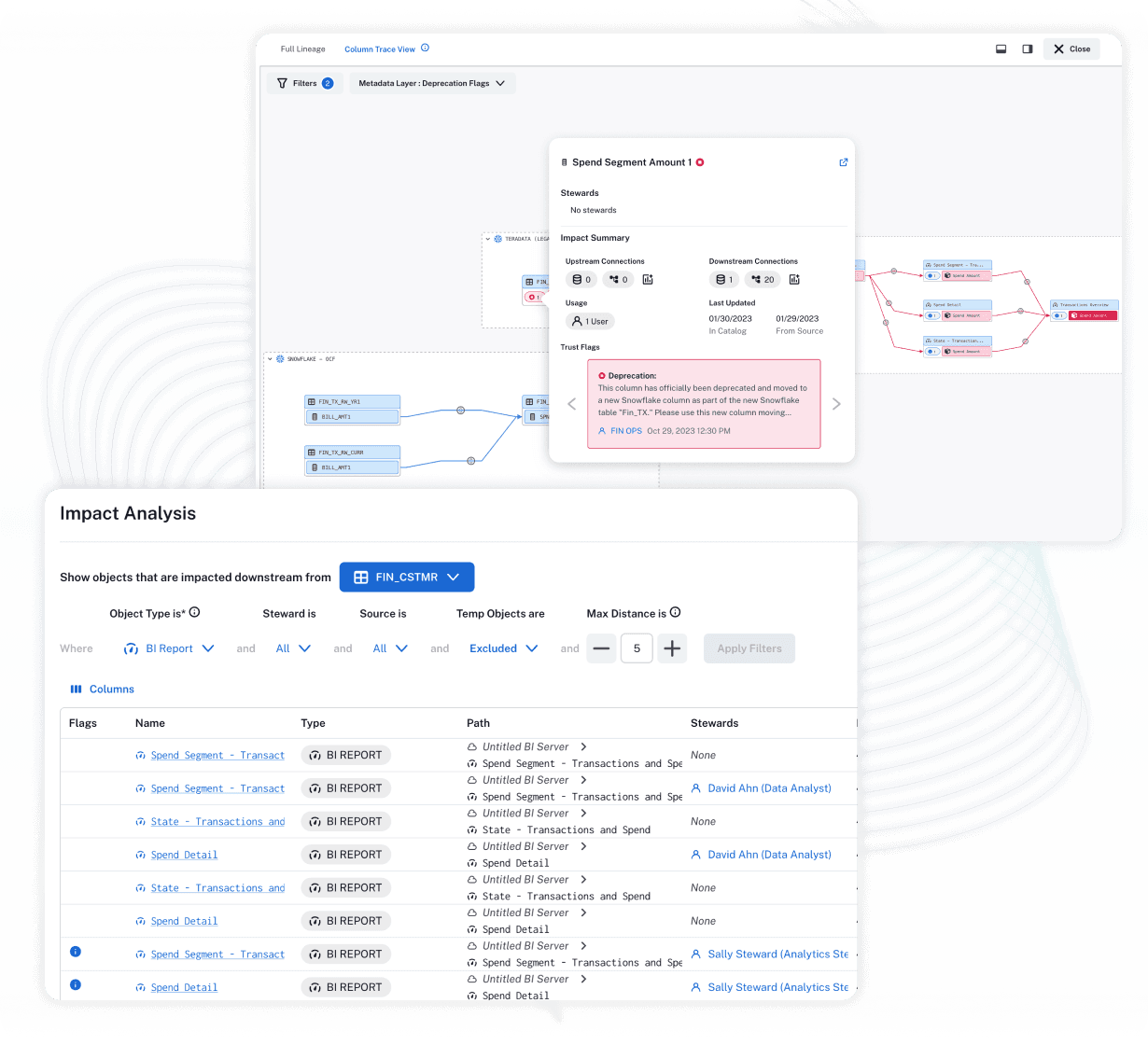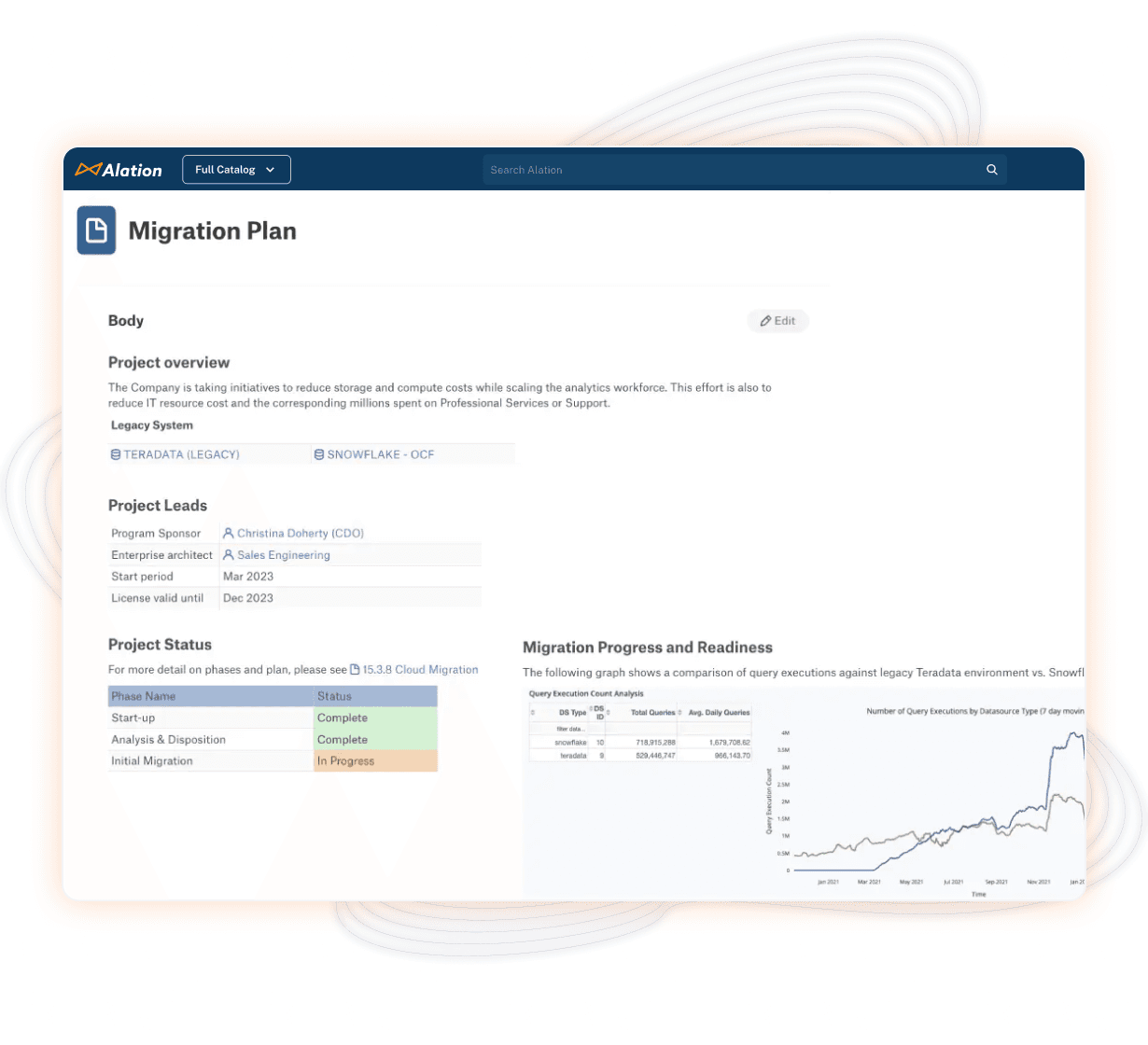Data Migration
Smarter, Faster Cloud Migrations
Enterprises use cloud data migration to accelerate digital transformation programs, delivering a faster return on investment, lower overall costs, and a streamlined data platform in the cloud.


Trusted Foundations
A successful cloud migration starts with a strong plan and a clear view of your data. Alation gives you a unified view of trusted data assets across on-prem and multicloud architectures, plus end-to-end data lineage and impact analysis to ensure a smooth, confident transition.

Eliminate Data Silos
Speed up cloud migrations to remove data silos, optimize cloud resources, and enable ML & AI. Use Alation consumption tracking and behavioral analysis to spot frequently used data and BI assets for a faster, smarter migration to your cloud-based data platforms.
Anticipate Impacts
How will moving applications and data to the cloud affect your business? Alation’s impact analysis and active metadata reveal downstream dependencies and compatibility issues before you migrate, so you can create a reliable migration plan.

Optimize and Scale
Migration is just the beginning. Alation continuously monitors data usage across cloud and on-premises to boost performance and cut costs. Tools like Snowflake Native App Peak Performance help you tune queries, shorten downtime, and lower costs as your environment grows.
FAQs about cloud data migration
Cloud migration refers to transferring an organization's data, applications, and infrastructure from on-premises systems to cloud-based platforms.
Start with profiling and cleansing source data, then use automated validation checks to compare pre- and post-migration records. A data catalog can help monitor lineage and track anomalies to ensure accuracy and completeness.
The right approach depends on your business needs, timeline, and risk tolerance. Common strategies include lift-and-shift for speed, phased migration for minimal disruption, or hybrid approaches for complex environments. A catalog provides visibility to guide the decision.
Pitfalls include overlooking data quality, failing to document lineage (and expose dependencies), and underestimating governance needs. Without proper controls, migrations can result in duplicate data, compliance gaps, or broken analytics.
AI can take a lot of the heavy lifting off your team, such as spotting errors, recommending data classifications, or flagging anomalies. It also surfaces insights more quickly, so your data strategy becomes proactive rather than reactive. However, these benefits only come when a strong governance framework supports AI. With proper policies and oversight, organizations manage data efficiently and make smarter, faster decisions.
Cloud migration is the process of moving an organization’s data, workloads, apps, and other digital assets and IT services into the cloud from an on-premises infrastructure.
Here are just a few of the potential benefits that cloud migration enables:
Improved accessibility to patient data
Enhanced data security and privacy
Streamlined collaboration and communication between healthcare providers
Scalability and flexibility
Real-time analytics for better decision-making
Reduced IT infrastructure and maintenance costs
Enhanced patient care
Improved drug discovery and expedited clinical cycles
Compliance with regulatory requirements and standards